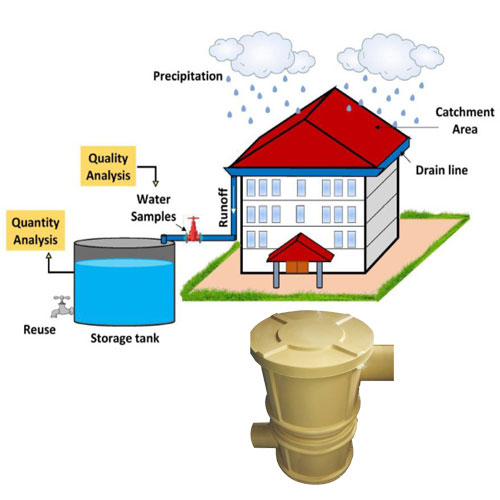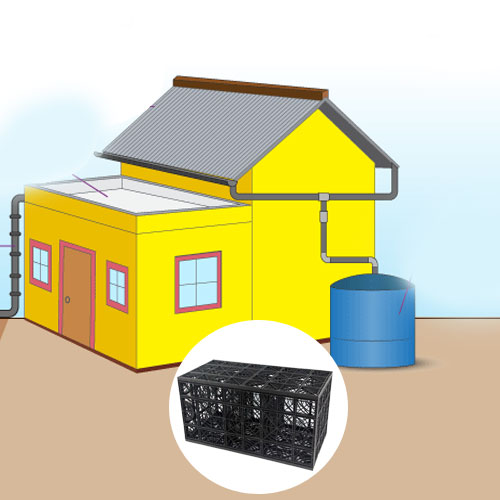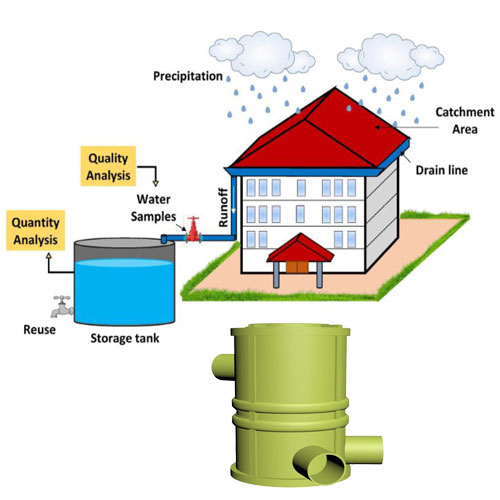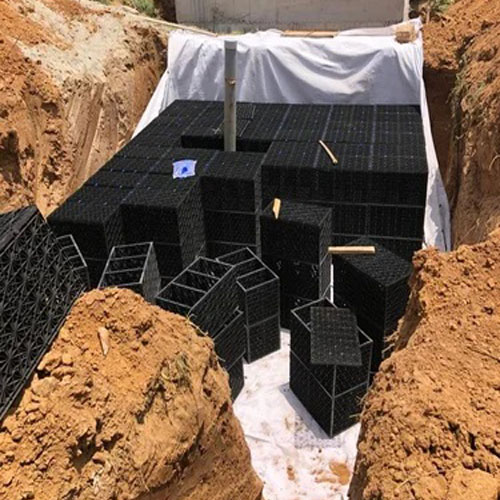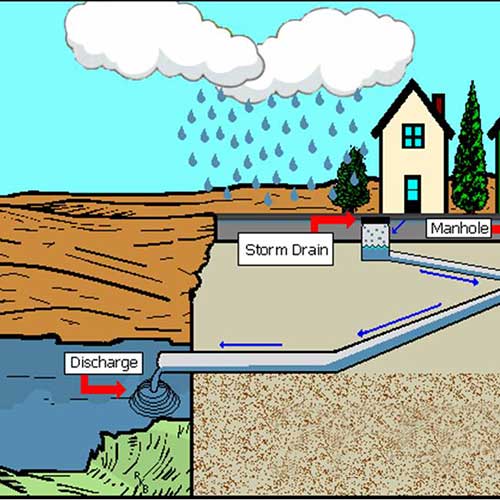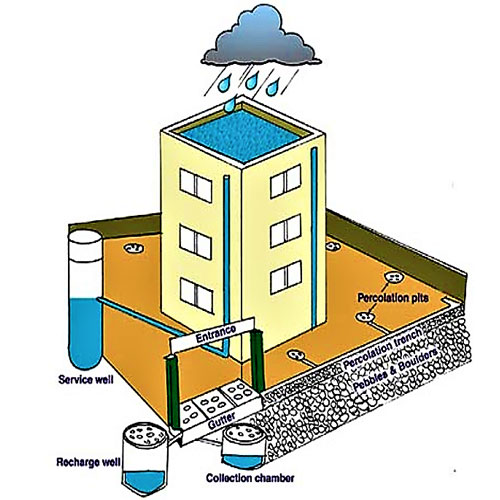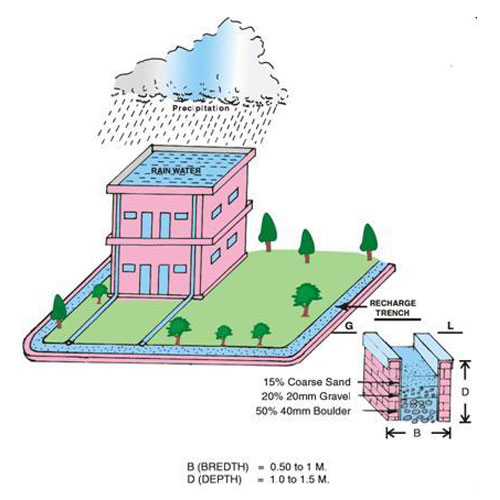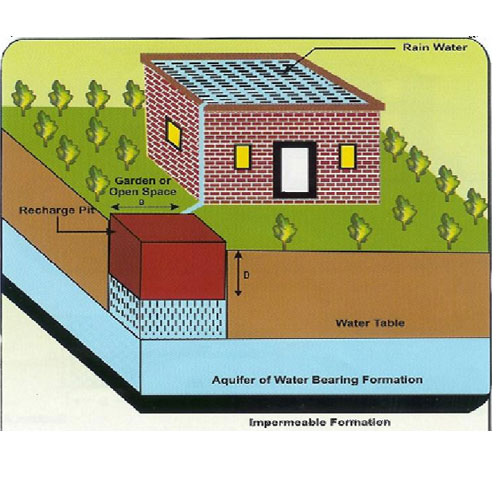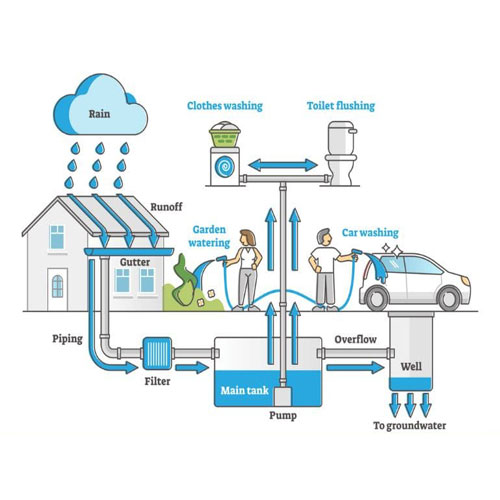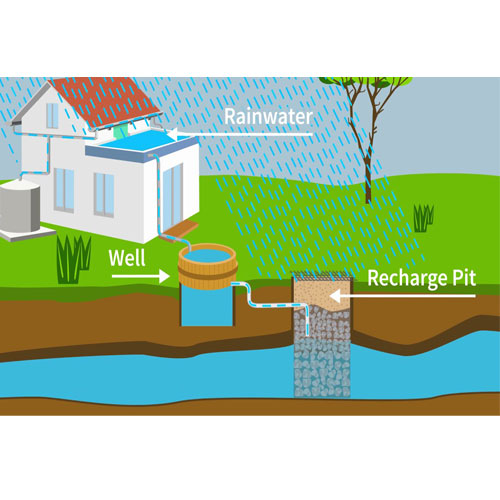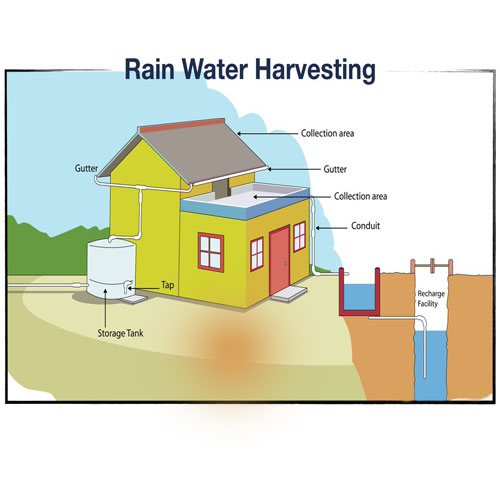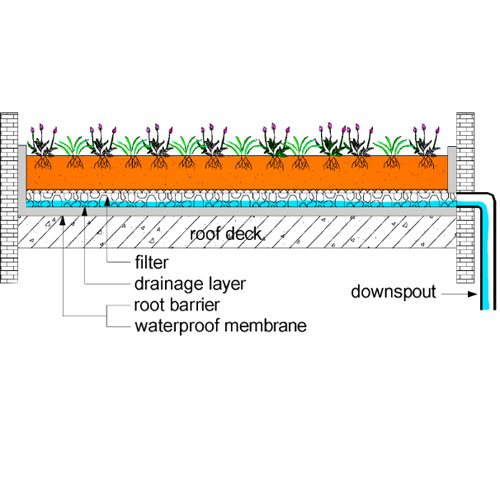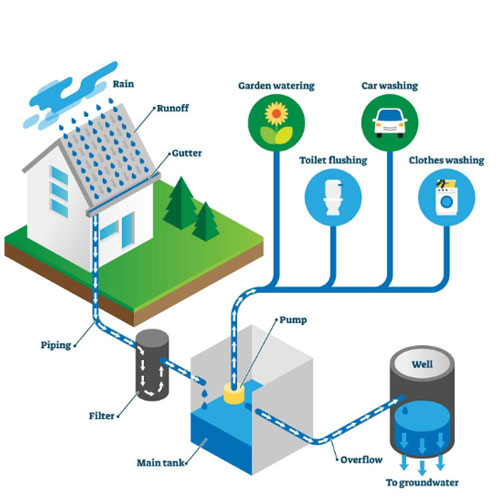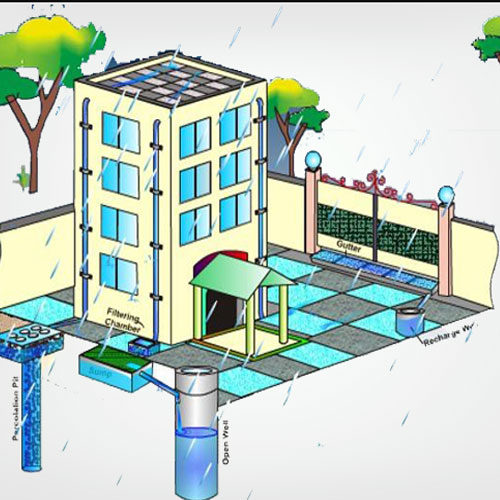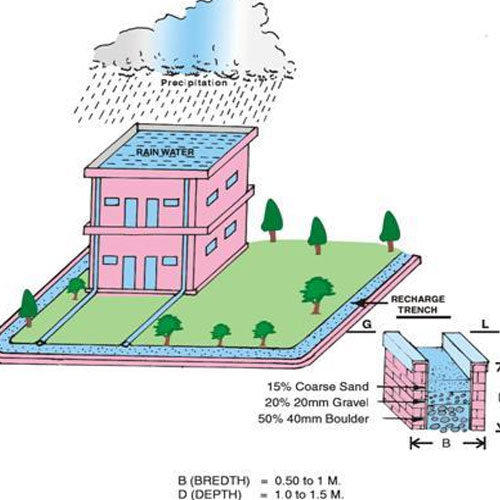Rooftop Rainwater Harvesting System : Unlocking the Potential of Indian Hydrological Construction India, with its diverse climate patterns and growing population, faces significant challenges in water management. To tackle the increasing water scarcity, rooftop rainwater harvesting has emerged as a sustainable and effective solution that aligns with the principles of Indian hydrological construction. This innovative approach to water conservation harnesses the power of rainwater by capturing and utilizing it for various purposes. In this article, we will delve into the exceptional potential of rooftop rainwater harvesting in Indian hydrological construction and its transformative impact on water sustainability. Rooftop Rainwater Harvesting System involves the collection and storage of rainwater from rooftops, utilizing them as catchment areas. Indian hydrological construction emphasizes the importance of utilizing available water resources efficiently, and rooftops present an ideal surface for rainwater collection due to their large catchment area. Rainwater is directed from rooftops through gutters and downpipes into storage tanks or underground reservoirs.
Why is Rooftop Rainwater Harvesting Important?
-
Conserve Freshwater:
Rooftop rainwater harvesting reduces dependency on freshwater sources, ensuring water availability during dry seasons. -
Reduce Water Bills:
Harvested rainwater can be used for gardening, cleaning, flushing toilets, and even for drinking (after filtration), cutting down utility costs. -
Prevent Urban Flooding:
Rainwater harvesting helps control water runoff, reducing the chances of urban flooding during heavy rainfall. -
Recharge Groundwater:
Rooftop rainwater harvesting systems can channel excess water into the ground, helping to replenish the groundwater table.
One of the key advantages of rooftop rainwater harvesting in Indian hydrological construction is its ability to mitigate the adverse effects of both droughts and heavy rainfall. In regions prone to water scarcity, this technique allows individuals and communities to harness rainwater as an alternative water source during dry periods. Conversely, in areas with high rainfall intensity, rooftop rainwater harvesting helps reduce the risk of flooding and soil erosion by capturing and redirecting excess rainwater.
Indian hydrological construction places a strong emphasis on sustainability, and rooftop rainwater harvesting aligns perfectly with this objective. By capturing rainwater, this technique reduces dependence on groundwater and surface water sources, which are often overexploited or subject to contamination. By utilizing rainwater for non-potable purposes such as gardening, toilet flushing, and cleaning, valuable freshwater supplies can be conserved, contributing to long-term water sustainability.
Rooftop rainwater harvesting systems can be customized to meet the specific needs and constraints of Indian hydrological construction. The size and design of storage tanks can be tailored to suit the available rooftop space and water requirements of the building or community. Additionally, modular storage tanks can be utilized, allowing for easy expansion or modification as water demands change over time. This adaptability makes rooftop rainwater harvesting a versatile solution for a wide range of residential, commercial, and institutional settings.
How Does Rooftop Rainwater Harvesting Work?
A rooftop rainwater harvesting system typically includes:
- Catchment Area (your roof)
- Gutters & Downspouts
- First-Flush Diverters (to remove debris)
- Filtration Units (sand, charcoal, or mesh filters)
- Storage Tanks or Recharge Pits
Benefits of Rooftop Rainwater Harvesting:
- Eco-friendly and cost-effective
- Reduces pressure on local water supplies
- Promotes self-sufficiency
- Improves groundwater levels
- Minimizes soil erosion
Applications of Rooftop Rainwater Harvesting:
- Residential homes
- Apartment complexes
- Schools and colleges
- Commercial buildings
- Industries
Why Choose Rooftop Rainwater Harvesting?
By adopting rooftop rainwater harvesting, you are contributing to environmental conservation while also enjoying long-term cost savings. It’s a smart, sustainable solution for urban and rural areas alike.
In the context of Indian hydrological construction, filtration and purification play a crucial role in rooftop rainwater harvesting systems. Rainwater collected from rooftops may contain debris, dust, or other contaminants. Therefore, incorporating effective filtration mechanisms into the system is essential to ensure the harvested rainwater meets the required quality standards. These filtration systems can include mesh filters, sand filters, activated carbon filters, and disinfection methods such as UV treatment or chlorination. By integrating these `purification techniques, the harvested rainwater can be made suitable for a variety of uses, including irrigation and domestic applications.
The economic benefits of rooftop rainwater harvesting System are particularly significant in Indian hydrological construction. By reducing reliance on external water sources, such as municipal supplies or tanker water, users can significantly lower their water bills. Additionally, the installation and maintenance costs of rooftop rainwater harvesting systems are relatively affordable, especially when compared to alternative water supply infrastructure. The return on investment in these systems can be realized in a relatively short period, making them an economically viable choice for both individual households and larger communities.
Moreover, Rooftop Rainwater Harvesting System in Delhi aligns with the principles of decentralized water management, which is integral to Indian hydrological construction. By empowering individuals and communities to manage their water resources locally, the burden on centralized water supply systems is reduced. This decentralized approach not only fosters water self-sufficiency but also enhances resilience, especially in areas prone to water shortages or disruptions. In conclusion, rooftop rainwater harvesting demonstrates exceptional potential in the Indian hydrological system.
